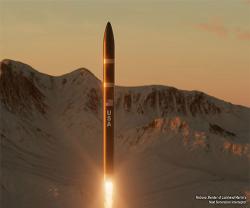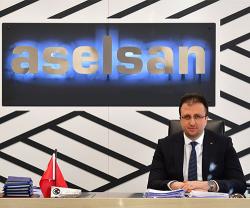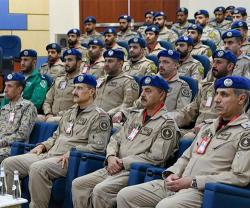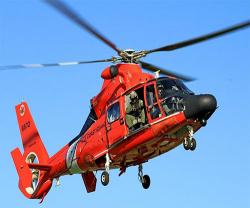The U.S. government is years behind China in the pursuit of so-called hypersonic weapons that bob and weave through the atmosphere at more than five times the speed of sound, Raytheon Technologies Corp.’s Chief Executive Officer (CEO) said Tuesday.
While the Pentagon has a number of hypersonic weapons programs in development and the U.S. understands the technology, China has “actually fielded hypersonic weapons,” Raytheon CEO Gregory Hayes said in an interview on Bloomberg Television’s “Balance of Power with David Westin.”
“We are at least several years behind,” he stressed.
The emerging, ultra-fast weapon systems have sparked concerns because of their potential to destabilize relations between the U.S., China and Russia. They may also become a front in the mounting competition between Beijing and Washington as the world’s two largest economies clash over trade, technology and humanitarian issues. Raytheon is developing a hypersonic cruise missile with the U.S. military.
Hypersonic capability is “the most destabilizing threat to the homeland,” Hayes said. “The time to react is very, very short.”
The CEO’s comments came after reports that China conducted two hypersonic weapons tests over the summer, including one of a so-called hypersonic glide vehicle. Launched from a missile or rocket, the craft separates and zips toward a target while maneuvering through the atmosphere. Hayes said such weapons can reach speeds of 22,000 miles per hour.
“We have to have automated systems to defend the homeland, and we are focused on that,” he said in the interview.
Raytheon’s Missiles and Defense unit in September successfully test-fired a hypersonic cruise missile that can travel at speeds greater than Mach 5 as part of a development contract for the U.S. Air Force and the Defense Advanced Research Projects Agency, the Defense Department’s advanced technology development agency.
“We will have weapons to challenge the adversaries but most importantly I think our focus is how do we develop counter-hypersonics. That’s where the challenge will be,” Hayes stressed.
Meanwhile, the Pentagon's top general also said Wednesday that China’s recent test of an earth-circling hypersonic missile was akin to the Soviet Union’s stunning launch of the world’s first satellite, Sputnik, in 1957, which sparked the superpowers’ space race.
Mark Milley, Chairman of the US Joint Chiefs of Staff, confirmed for the first time the Chinese test of a nuclear-capable missile that would be very difficult to defend against.
“What we saw was a very significant event of a test of a hypersonic weapon system. And it is very concerning,” Milley told Bloomberg TV.
“I don’t know if it’s quite a Sputnik moment, but I think it’s very close to that. It’s a very significant technological event that occurred... and it has all of our attention.”
The US Department of Defense had previously declined to confirm the test, first reported by the Financial Times on October 16. The newspaper said the August test launch caught Washington by surprise.
The missile circled the Earth at a low altitude and a velocity of more than five times the speed of sound, although it missed its target by more than 30 kilometers (19 miles), according to the Financial Times (FT). China denied the report, saying it was a routine test of a reusable space vehicle.
Hypersonics are the new frontier in missile technology, because they fly lower and so are harder to detect than ballistic missiles, can reach targets more quickly, and are maneuverable. That makes them more dangerous, particularly if mounted with nuclear warheads.
The United States, Russia, China and North Korea have all tested hypersonics and several others are developing the technology.
China in 2019 unveiled a hypersonic medium-range missile, the DF-17, which can travel around 2,000 kilometers and can carry nuclear warheads.
The missile mentioned in the FT story is a different one, with a longer range. It can be launched into orbit before coming back into the atmosphere to hit its target.




















